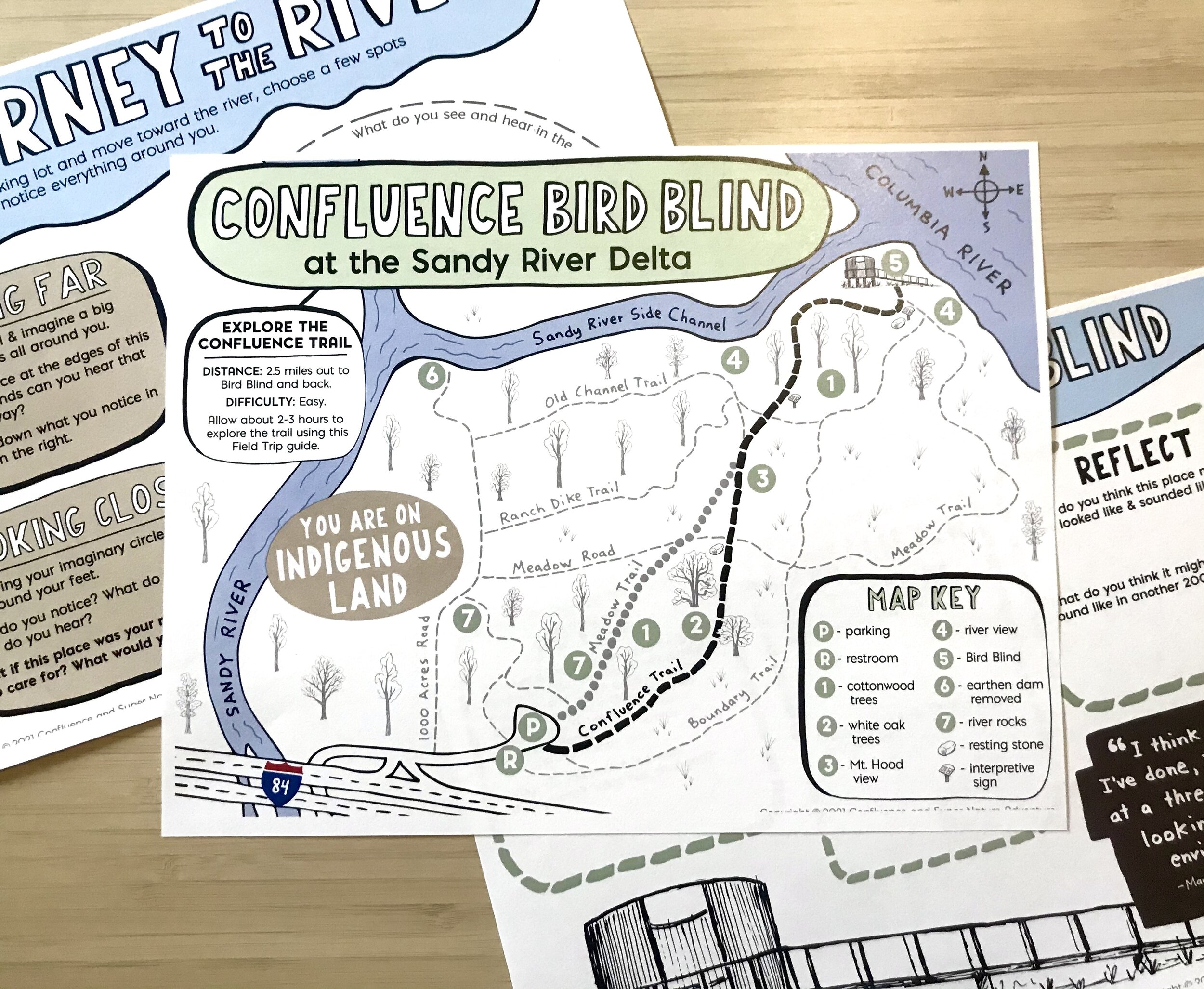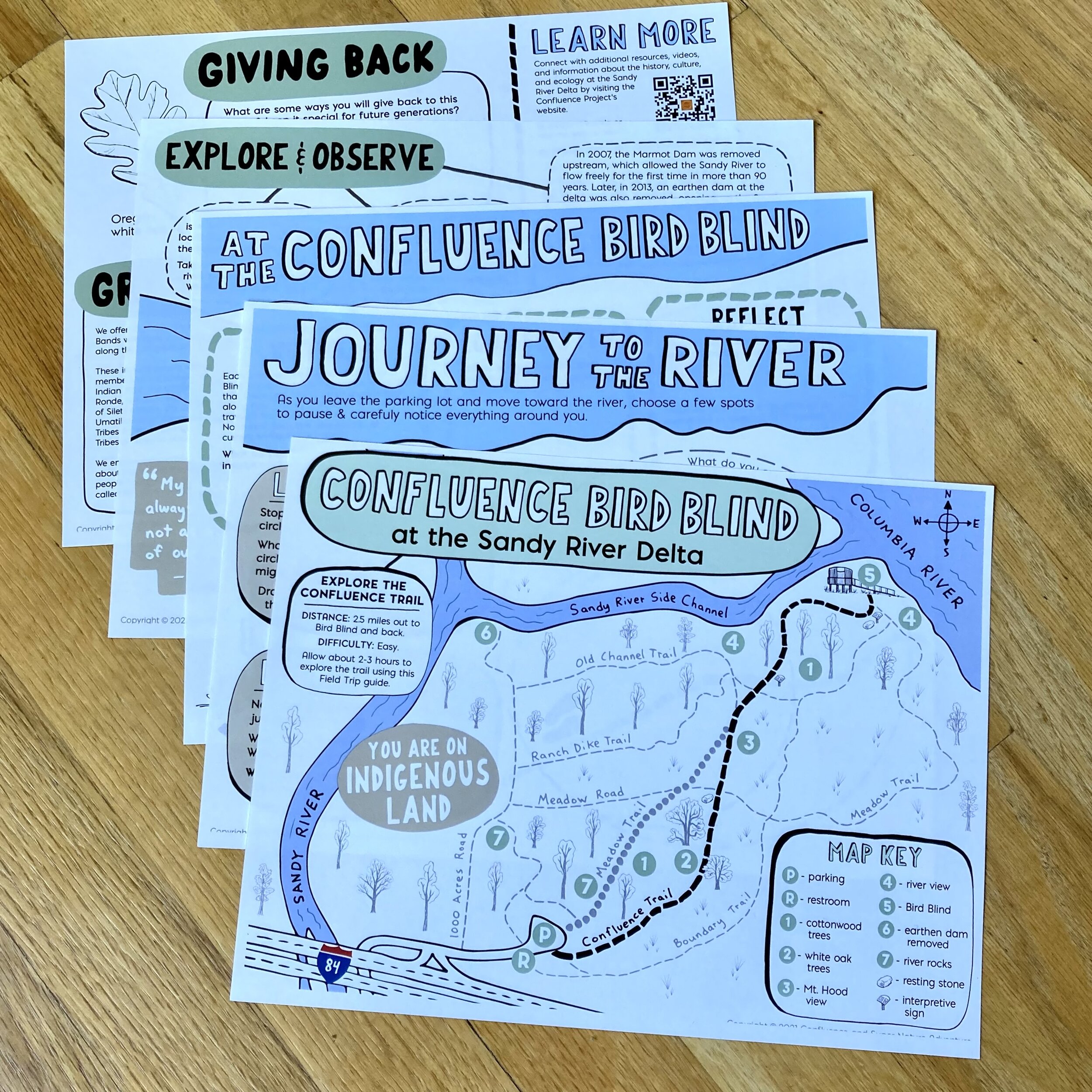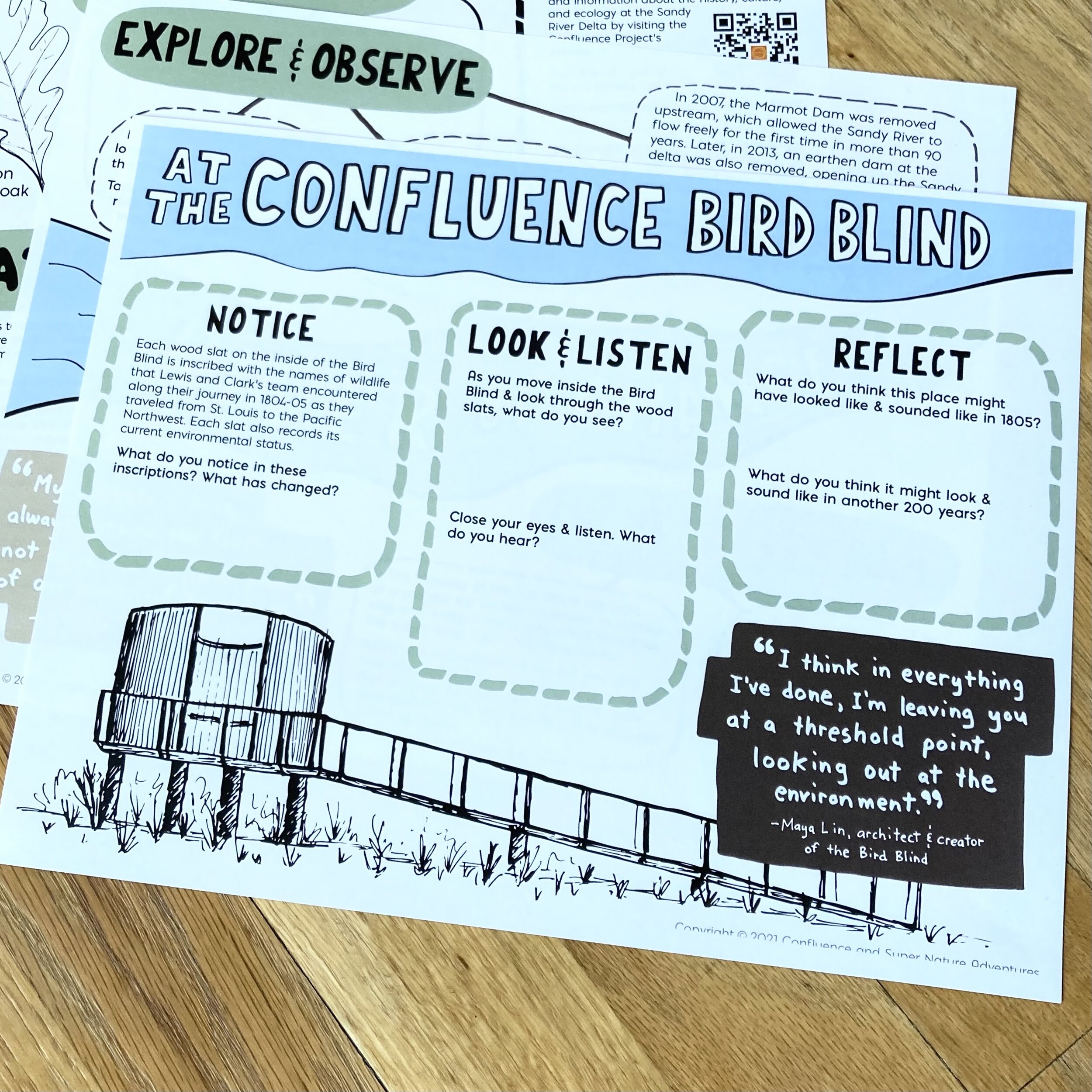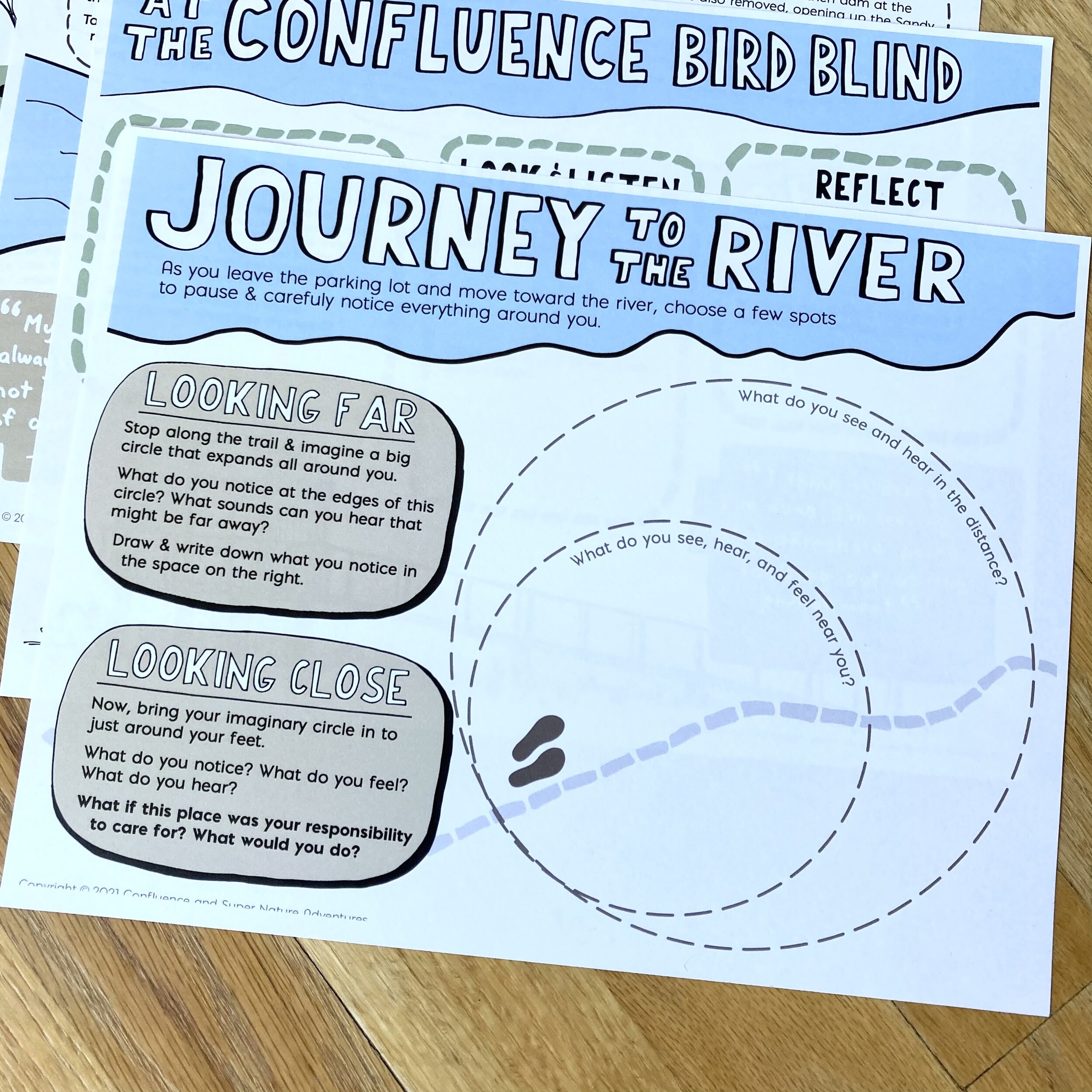Field Guide: Confluence Bird Blind at Sandy River Delta






The family-centered Field Guide for the Confluence Bird Blind at the Sandy River Delta is a project completed for Confluence, a nonprofit with the mission of connecting “you to the history, living cultures, and ecology of the Columbia River system through Indigenous voices. [It is] a community-supported nonprofit that works through six art landscapes, educational programs, and public gatherings in collaboration with northwest tribes, communities, and the celebrated artist Maya Lin” (Quote source)
The project was created with support provided by Metro’s Nature in Neighborhood program as part of Confluence’s education programs connecting students with the culture, history, and ecology at the Sandy River Delta. It is one of a series of several projects designed for hands on learning through engagement with Confluence art sites.
The project is designed “to guide you though what you see, hear, and feel there, and prompt thinking about changes in the landscape,” and includes five pages of prompts, activities, and quotes to engage with the space as you journey to the Bird Blind. The Sandy River Delta Bird Blind was created by Maya Lin and formally dedicated in 2008.
The pages include the following features:
Map that includes the main routes to the Confluence Bird Blind, as well as other trails around the park. One of the goals is to provide families with a variety of routes to explore the ecosystem at the park.
Journey to the River page designed to encourage slowing down, observing, and noticing along the way. Activities in this Field Guide also invite families to consider their own roles as stewards of the space.
Page about the Confluence Bird Blind. Maya Lin designed the Bird Blind with inscriptions of wildlife that Lewis and Clark encountered along their expedition to the Pacific. Activities on this page encourage reflections about the past, present, and future, and how this space has changed.
A page on the “River of Change” focusing on past, present, and future efforts to protect and restore the space.
A credits and gratitude page.
